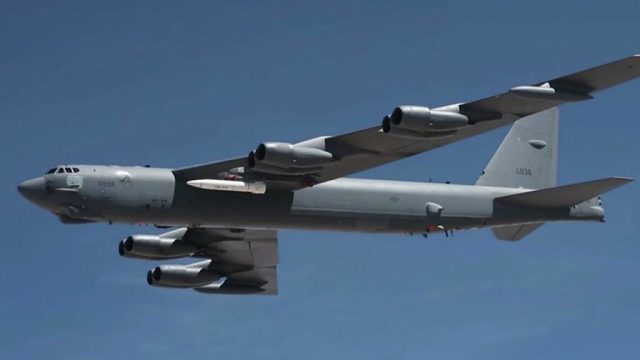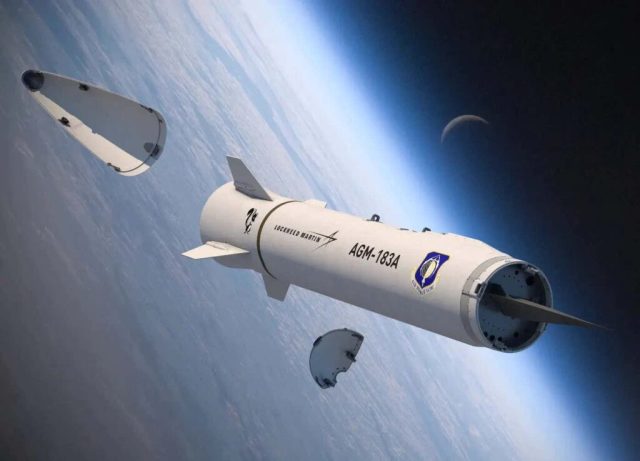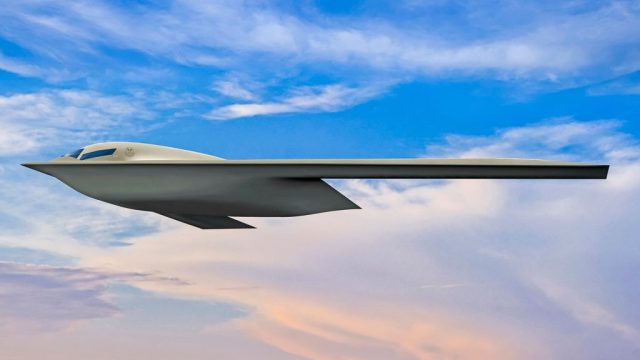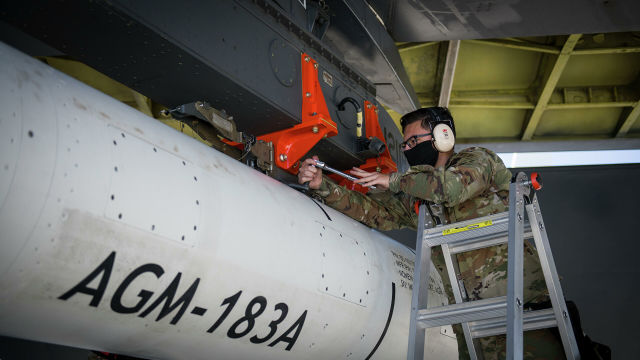The United States has tested the warhead of the AGM-183A ARRW (Air-Launched Rapid Response Weapon) hypersonic complex. Earlier tests of the system failed.
The program for creating the American ARRW hypersonic missile has passed an important stage: as it became known, the United States tested its warhead for the first time.
The tests were conducted by the 780th Test Squadron. During them, a warhead was detonated. The military does not disclose details about the design and capabilities of the product, noting, however, that during the tests it was possible to obtain data on the lethality of the complex.
Next Saturday, the US Air Force may conduct a test launch of a promising AGM-183A ARRW air-launched hypersonic missile over the Pacific Ocean. The attempt of the first flight test of the prototype Air-Launched Rapid Response Weapon, undertaken in the spring, ended in nothing. Due to technical problems, the product was not launched from the carrier aircraft.

B-52 with AGM-183A ARRW
Image source: US Air Force
The AGM-183A ARRW is one of the Pentagon's key defense programs. It involves the creation of an air-based missile equipped with a controlled combat unit.
Many of the main parameters of the product are still kept secret, but some information still appeared in the media. According to Major General of the Air Force Andrew J. Gebary, "the rocket will be able to fly almost 1000 miles in 10-12 minutes." If we are talking about land miles, this gives a maximum range of about 1,600 kilometers. The speed of the combat unit is likely to be up to M=8.

Lockheed Martin AGM-183A ARRW
Image source: US Air Force
It is also known that the B-52 strategic bomber will be able to carry four ARRW missiles on an external suspension-two on each pylon.
In the future, this machine, like other American bombers, will be replaced by a promising B-21 aircraft. Recently, the Air Force presented a new image of a winged machine, which gives the most detailed idea of what the new aircraft will look like today.

B-21
Image source: USAF
A notable feature is the original location of the windows. In the early images, a more "traditional" design was applied, similar to the one that can be seen in the B-2 Spirit — the prototype of the B-21. At the same time, it is not known for certain what capabilities the new aircraft will have. It is sometimes referred to as a "reduced B-2".
There is even less certainty about the Russian strategic bomber - "invisible", created under the PAK DA program. Probably, the aircraft will be subsonic and will be able to use hypersonic weapons. The first flight can be expected in the middle of the decade.
.shesht-social-sharing-block { margin-top: -40px; }

